This post may contain affiliate links. If you use these links to buy something we may earn a commission. Thanks.
Low-maintenance ground covers for shade should be lush with minimal light and for little to no effort—other than planting and establishing them!
A low-maintenance ground cover also means that the plant isn’t overly invasive or aggressive—resulting in your need to cut it back and ‘control’ it.
With thousands of plant species to choose from, this combination (Low maintenance + shade) exists in the ground cover realm.
In this post, you’ll find full and partial-shade-loving ground covers that grow at a medium rate. A medium growth rate results in easy to little care required throughout their long life. What you won’t find are plants that require full sun.

Mulch and mushrooms also make a very low-maintenance ground cover. Since mushrooms grow best in shade, it’s a perfect match! The hardest part about maintaining a mushroom bed is simply adding fresh mulch every 1-2 years. In a shaded position and mulch depth, no watering, fertilizing, or any other kind of care is required.
If you happen to be a mushroom lover, I highly recommend looking into making a mushroom bed! You’ll have bountiful mushroom dinners every spring and summer.
See: Grow a Mushroom Garden at Home in 4 Steps
Lamb’s ear (Stachys byzantina)
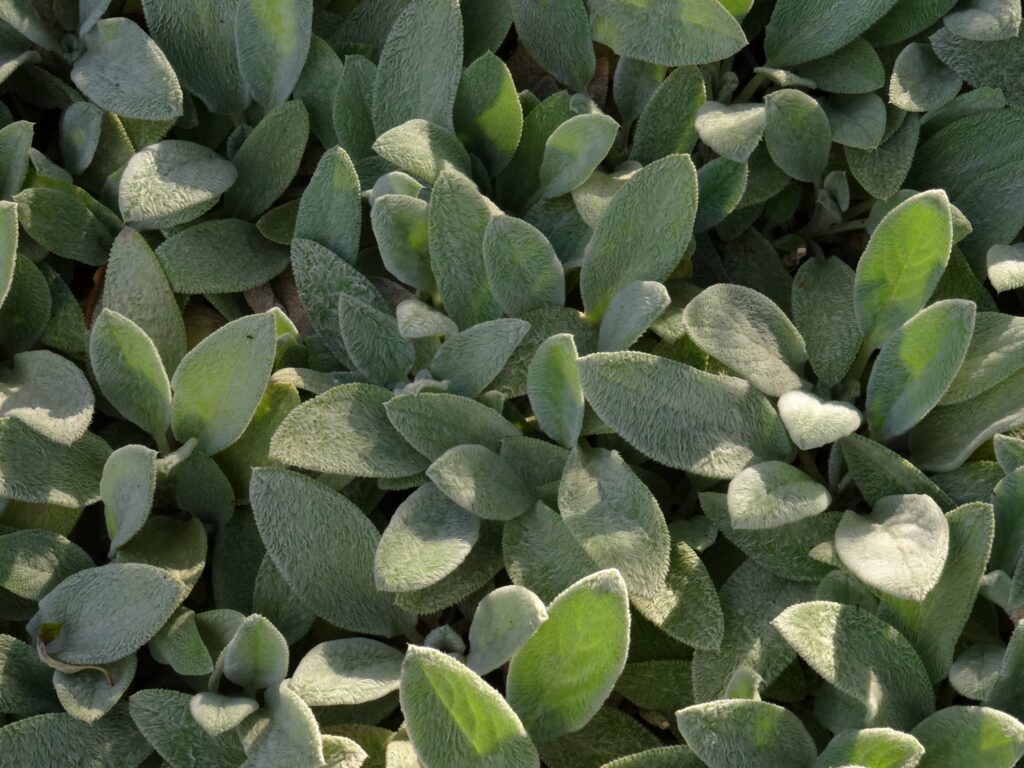
Lamb’s ear is known for being low maintenance. They tolerate dry soil and thrive in moist or dry conditions whether in shade or sun and don’t require rich soil to thrive.
- Height: 12-24 inches
- Range: Native to the Middle East
- Climate: Zones 4-8
- Functions: Ornamental ground cover for sensory gardens or rocky areas.
- Light requirements: Partial shade or no shade.
- Soil preferences: Moist or dry soil and drought tolerant when established.
3 types of lamb’s ear are available to order from this nursery or seeds are available here.
Hosta (Hosta plantaginea)

Hostas are probably the most common shade-loving ground cover because they require zero maintenance. with fountaining lush foliage with a water-capturing funnel shape, they tend to keep their soil moist and tolerate drought. You can have hostas in consistently moist areas or in dry shade with success.
Hostas also prefer a shaded position as full sun can scorch the leaves.
- Height: 6-8 inches
- Range: Native to Asia
- Climate: Zones 3-8
- Functions: Ornamental ground cover for edible shade gardens.
- Light requirements: Partial shade or full shade.
- Soil preferences: Moist soil. Suitable for heavy clay.
A large selection of colors and foliage patterns are available among hostas. Dozens of plant starts are offered here and more rare ones are available by seed here.
Wintercreeper (Euonymus fortunei)
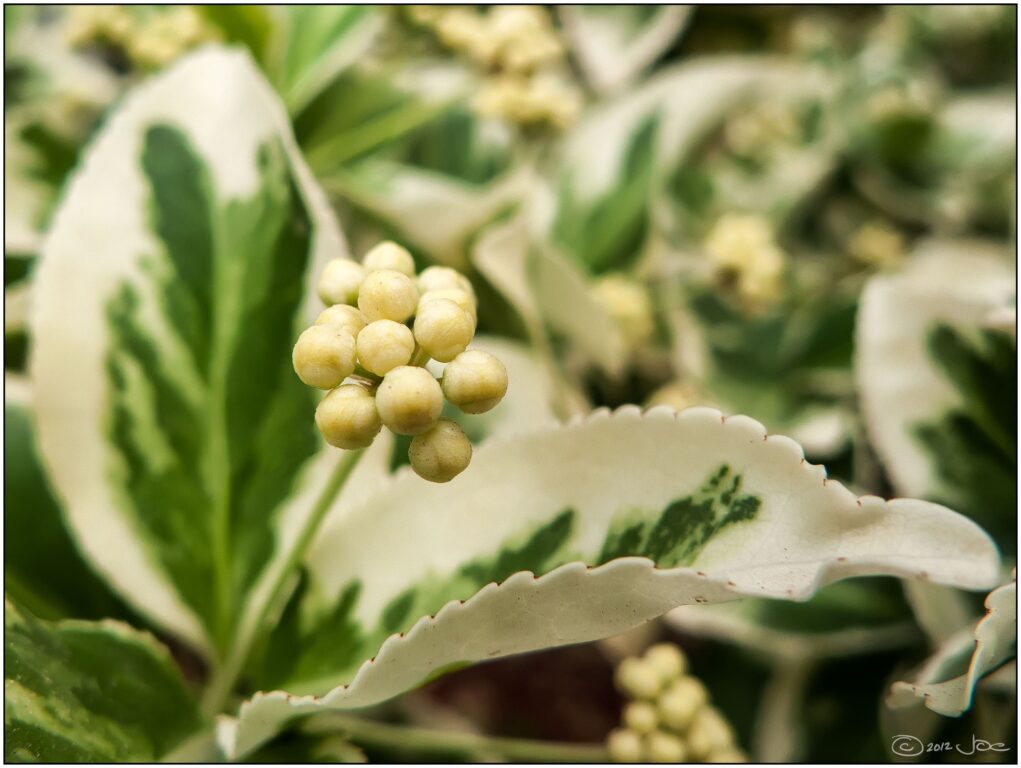
Winter creeper is often used to control erosion with style. The most common varieties are variegated with white known as ‘variegated’ or yellow and green coloring known by the name ‘green and gold.’
- Height: 12-24 inches
- Range: Native to Asia
- Climate: Zones 5-9
- Functions: Evergreen ground cover or low-growing hedge. Can climb or cascade. Prevents erosion.
- Light requirements: Full to partial shade or no shade.
- Soil preferences: Moist soil or dry soil with light to heavy textures. Suitable for heavy clay.
Several varieties of this plant are offered here and seeds or starter plants here.
Weeping forsythia (Forsythia suspensa)

Weeping forsythia is a popular ornamental ground cover and relatively low growing for a woody shrub.
Its easy-going nature makes it a common first choice plant for both sun and shade positions. Once mulched and established after the first year you’ll rarely, if ever, need to think about watering or fertliizing it. Pruning is also very simple and will need to be done very seldomly.
- Height: 6-10 inches
- Range: Native to Asia
- Climate: Zones 5-8
- Functions: Edible and potential medicinal value. Ornamental foliage and flowers with March to April bloom. Ground cover for full to partial shade. Low-maintenance gardens.
- Light requirements: Full to partial shade or no shade.
- Soil preferences: Moist soil with mulch.
Plants to order are available here and seeds available here.
Bergenia (Bergenia cordifolia)
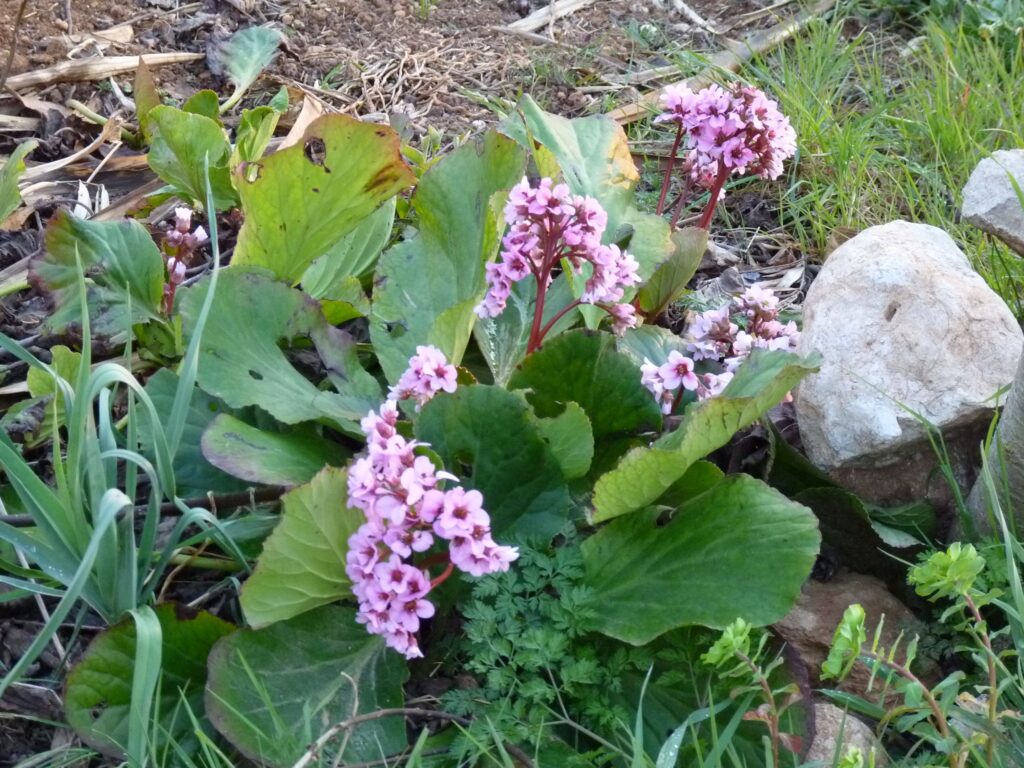
Also known as Elephant’s Ears, bergenia has large, leathery leaves and clusters of pink or white flowers.
A perfect plant for poor soils and low maintenance.
The foliage is evergreen in zones 6-7 and above and semi-evergreen in harsh winters. Less winter wind exposure may encourage the plant to be in a position to keep its leaves longer or all year.
- Height: 6-12 inches.
- Range: Eastern Asia.
- Climate: Zones 3-9.
- Functions: Early ornamental evergreen foliage all year and flowers from March to May. Ideal for ornamental gardens for a variety of flowers and blooming times.
- Light requirements: Full or deep shade, partial shade, or full sun.
- Soil preferences: Moist soil, but tolerates drought. Suitable for heavy clay.
Seeds and plants are available here.
Cyclamen (Cyclamen hederifolium)
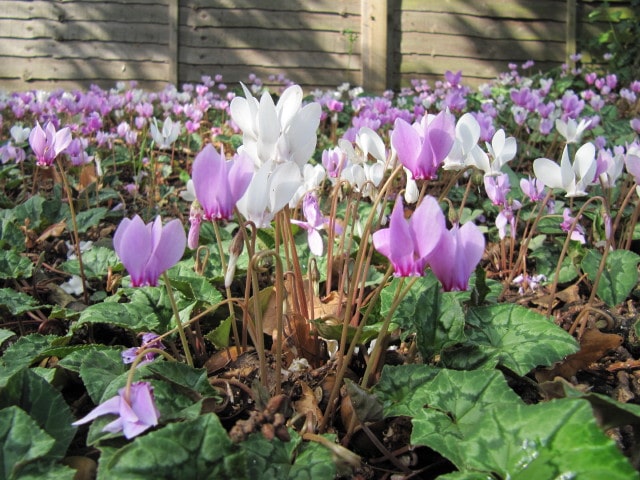
For shaded or lightly shaded rocky areas, cyclamen thrive in light, medium, or rocky soils. With a medium growth rate and adaptability to various soils and lighting this is a very low maintenance option. Unlike woody shrub type ground covers, you’ll never need to worry about pruning cyclamen.
- Height: 4-6 inches
- Range: Native to Europe
- Climate: Zones 6-9
- Functions: Attractive ornamental ground cover for deer/rabbit resistance.
- Light requirements: Full, semi, or no shade.
- Soil preferences: Moist soil.
Seeds are available here.
Sweet Woodruff (Galium odoratum)

Sweet woodruff is a fragrant ground cover with an annual lifecycle. In our area, this plant freely and easily reseeds itself. You’ll find it pops up each year in the same spot and new spots as well.
- Height: 5-6 inches
- Range: Native to Europe and Asia
- Climate: Zones 3-7
- Functions: Fragrant. Food source for butterflies. Ornamental: attractive foliage and dainty white flowers from June to August. Best for ‘wild’ style gardens.
- Light requirements: Thrives in full shade, partial shade also works when sheltered from any hot sun.
- Soil preferences: Dry to moist soils with plenty of mulch
While lovely to look at, this plant does produce small burs when it goes to seed each year. The burs aren’t a terrible nuisance as they aren’t overly sticky or sharp like various native weeds. This plant is easy to get rid of if you ever want to. Simply cut it back when it goes to seed.
You can also control the spread by collecting its seeds before they
Seeds to plant sweet woodruff in your cold shady garden are available here on Etsy.
Checkerberry (Gaultheria procumbens)
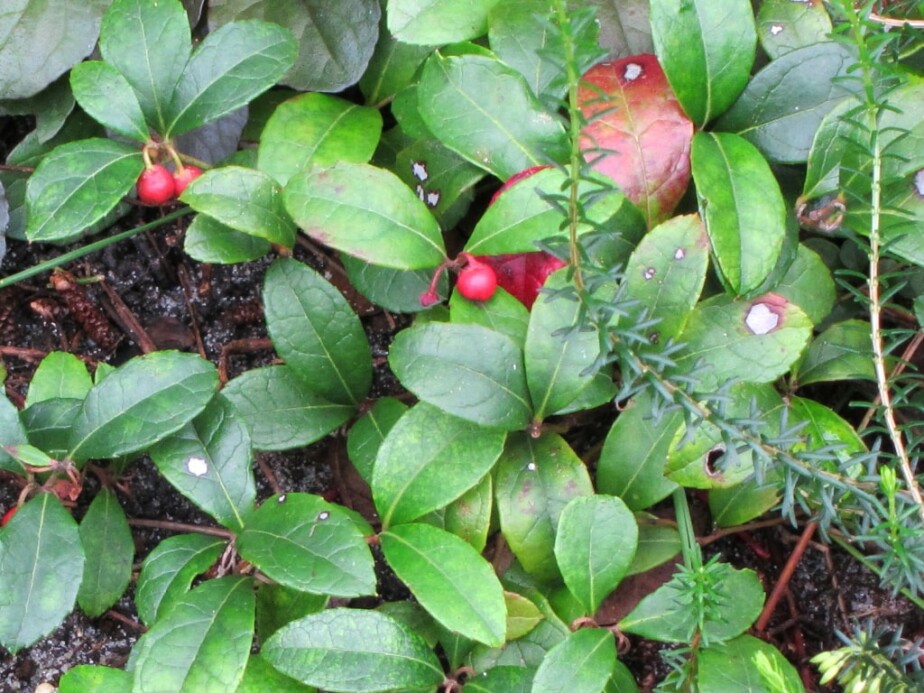
Native to Eastern North America, I can confirm that these berries are as fragrant as chewing wintergreen gum. The flavor, however, is bland and like chewing styrofoam.
Once established this plant survives tough droughts, although it does prefer moisture—perfect for the rest of the year when not experiencing drought.
- Height: 3 inches
- Range: North America
- Climate: Zones 3-6
- Functions: Edible fruit and leaves. Fragrance. Low ground coverage.
- Light requirements: Full/deep shade to partial shade.
- Soil preferences: Moist or dry soil and tolerates drought.
These little leaves and berries make a great cup of tea but grow at a medium rate.
Plant loads of seeds to fill a space.
Shallon (Gaultheria shallon)
Zones 6-9
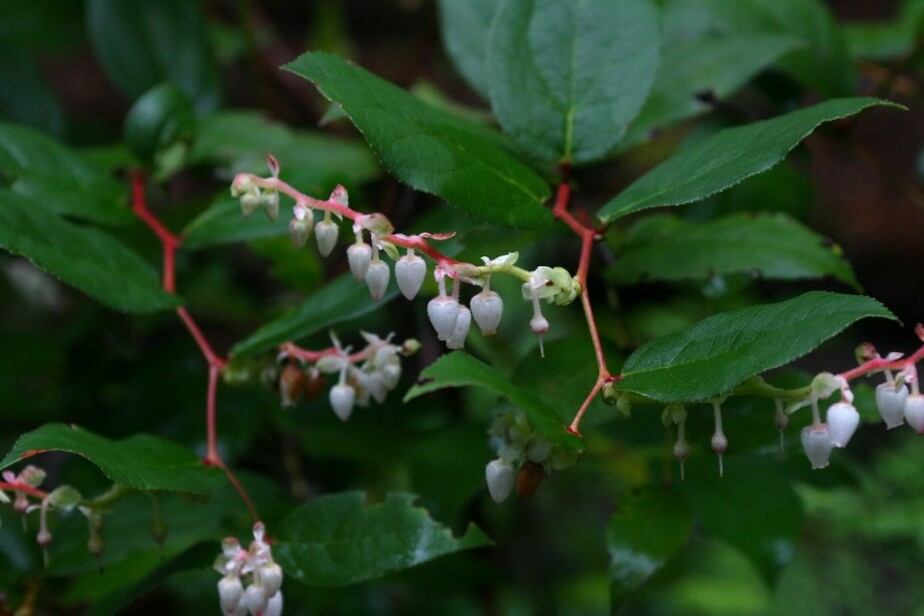
Shallon (or salal) produces sweet and juicy edible fruit and grows well in dappled full shade, part shade, or no shade conditions. An evergreen ground cover shrub that prefers shade or semi-shade in moist, well-drained, and organic-rich soils. Tolerates drought and full sun.
Shallon has a creeping root system often used for erosion control and vigorous spread. A vigorous spread is great for ground coverage and more fruit! With a moderate growth rate, it doesn’t tend to get out of hand too quickly.
Overall, this ground cover is a combination of the most palatable and shade-tolerant of this list!
Bigleaf periwinkle (Vinca major)
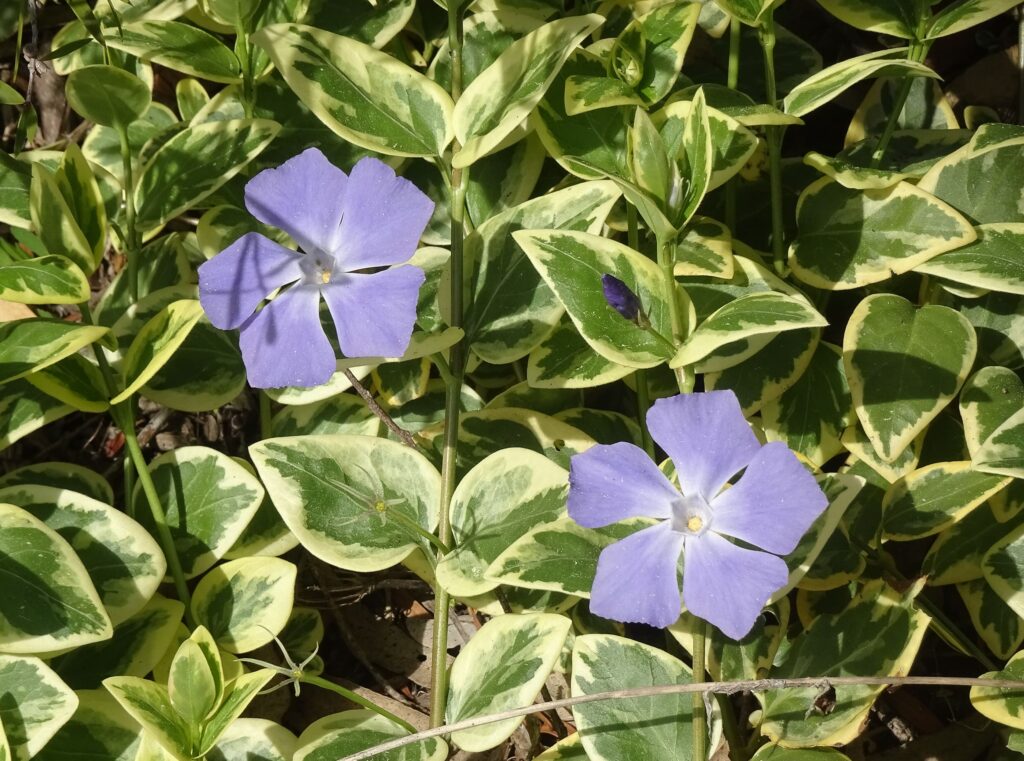
This evergreen vining ground cover grows in all sun levels and is very resilient to dry spells. This vine is often used in “annual” hanging baskets as it beautifully cascades long lengths and withstands quick-drying soils in sun or shade.
In the mild winters of zones 7-9 this perennial is evergreen—keeping its foliage year-round. They flower very well in all but deep shade but are primarily used for erosion control in forest gardens.
- Height: 12-18 inches
- Range: Europe and Africa
- Climate: Zones 7-9
- Functions: Ornamental April to June flowers and vibrant or variegated foliage. Erosion control. Quick ground coverage.
- Light requirements: Full/deep, partial, or no shade.
- Soil preferences: Dry or moist soil and is drought resistant. Suitable for light or heavy soils, including heavy clay.
Seeds and various flower colors are available here and solid green or variegated foliage are available in containers here.
Lesser Periwinkle (Vinca minor)
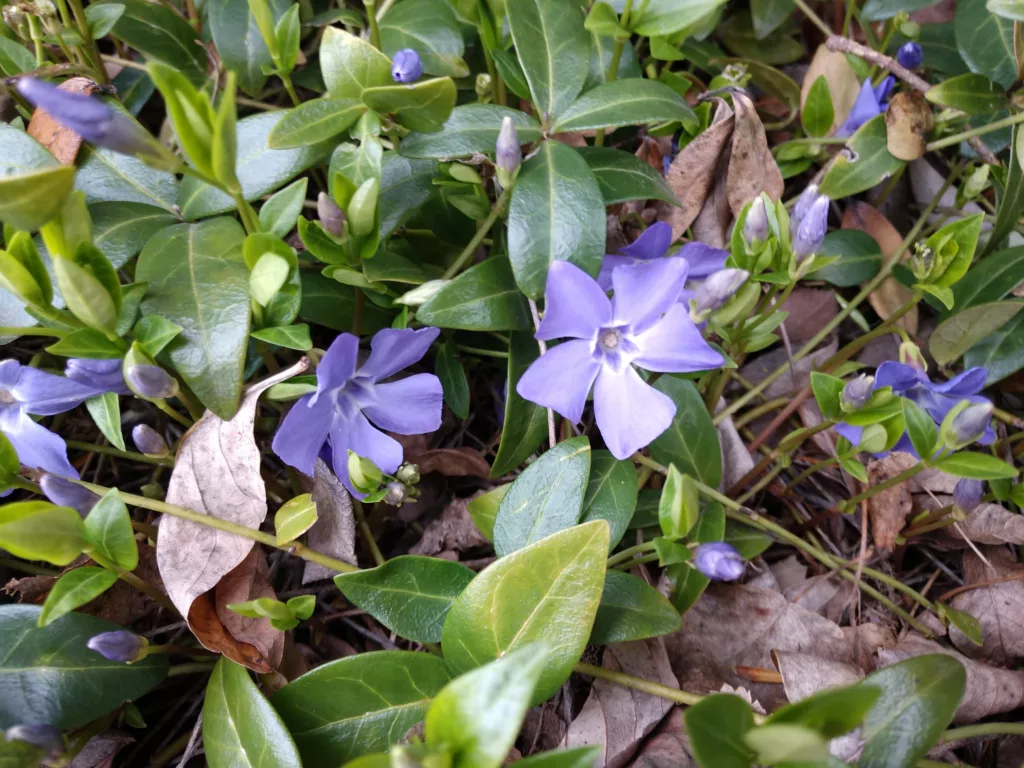
Also called Periwinkle, this is a semi-evergreen ground cover with blue-purple flowers. It’s a fast-growing erosion controller and a popular choice for dry shady spaces.
Although popular, it may be considered invasive or naturalizing in your area.
- Height: 6 inches
- Range: Europe and Asia
- Climate: Zones 4-9
- Functions: Ornamental flowering from April to May with season-round attractive foliage. Erosion controlling ground cover for rock gardens, food forests, steep slopes, shady areas, and borders.
- Light requirements: Full/deep shade to partial shade, or no shade.
- Soil preferences: Moist or dry soil and tolerates drought. Suitable for various soil types including heavy clay.
Plants are available here and seeds are here. Ordering seeds offers pink and other flower colors, but a container allows for quicker establishment.
Wild blue phlox (Phlox divaricata)
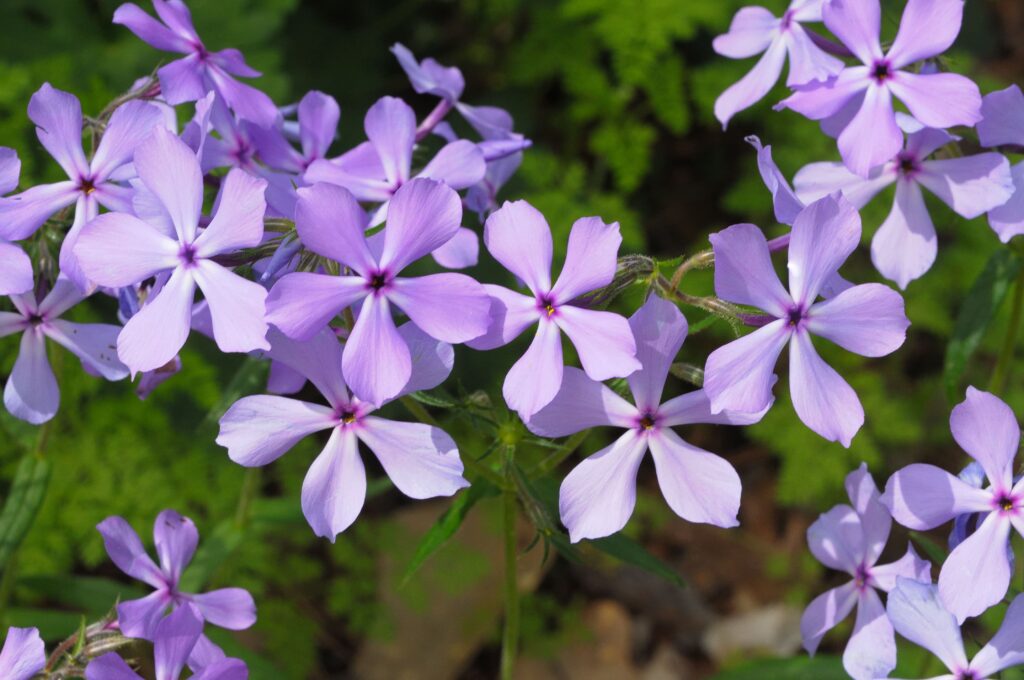
This variety of phlox thrives and flowers in both full and partial shade. It’s native and often included in food forests as a ground cover to attract wildlife and important pollinators. The foliage is considered evergreen, but I would call it semi-evergreen as it is not green during the snowy winter months!
- Height: 6-12 inches
- Range: North America
- Climate: Zones 4-9
- Functions: Best planted when needing a pollinator magnet and gorgeous ornamental ground cover.
- Light requirements: Full/deep shade to partial shade or full sun.
- Soil preferences: Moist soil and drought tolerant.
Etsy offers wild blue phlox seeds here and grown plants are offered here.
Creeping phlox (Phlox stolonifera)
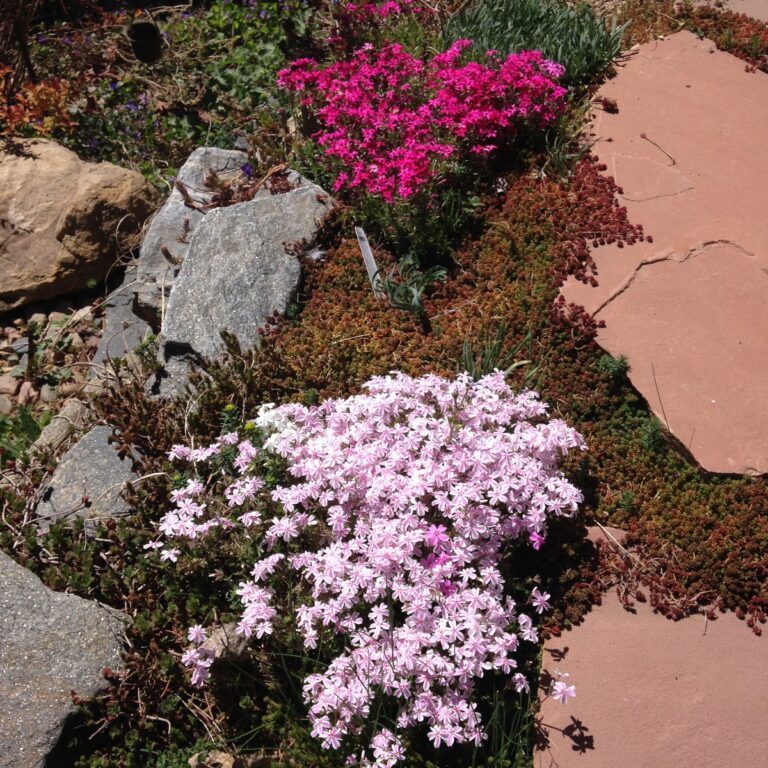
Creeping phlox is functionally similar to wild blue phlox, but is a lower-growing version. This phlox tends to spread easier and cover more ground in less time. This is a better choice for larger spaces in need of dense ground coverage.
- Height: 3-8 inches
- Range: North America
- Climate: Zones 4-9
- Functions: Best planted when needing a pollinator magnet and gorgeous ornamental ground cover.
- Light requirements: Full/deep shade to partial shade or full sun.
- Soil preferences: Moist soil and drought tolerant.
Etsy offers creeping phlox seeds here and transplants are offered here.
Japanese Spurge (Pachysandra terminalis)

Japanese spurge offers a vibrant and eye-catching texture. It thrives in deep shade or partial shade and offers a dense bright green in darker spaces. While it grows fast, it isn’t invasive beyond the shade.
- Height: 2-8 inches
- Range: Asia
- Climate: Zones 4-8
- Functions: Best used under established shrubs or trees to control erosion, cover exposed soil, or fill gaps around rocks.
- Light requirements: Full/deep shade to partial shade.
- Soil preferences: Dry or moist soil and tolerant to drought.
From April to May, you’ll also enjoy the scent of inconspicuous flowers.
Japanese spurge seeds and cuttings are available here and plants are available here.
Piggyback plant (Tolmiea menziesii)

The piggyback plant is known for being easy-care when planted in a shaded position. Shade protects the leaves from scorching and prevents dry soil. If the soil does dry in the summer months, it can also handle dry shade even though it prefers moisture. With a layer of mulch, however, you’ll never need to think about watering it.
- Height: 16-32 inches
- Range: Western North America
- Climate: Zones 7-9
- Functions: Evergreen foliage. Native preservation. Edible leaves and shoots. Low maintenance ground cover for shade.
- Light requirements: Full/deep shade to partial shade.
- Soil preferences: Moist or dry soil. Suitable for various soil types from light sand to heavy clay.
Small businesses offer piggyback plants and seeds here.
Up next: 12 Low-Growing (Low Maintenance) Edible Ground Covers
Recent Posts
There’s no shortage of full-sun ground covers for zone 4 climates! Each plant in this list can withstand the frigid temperatures and also enjoy the hot sun in summer. Full sun means that a plant...
There's no shortage of full sun ground covers, not even in zone 3! Zone 3 climates offer hot but short-lived summers and very cold winters. So each plant in this list can withstand the frigid...
